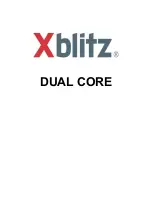
V1.02
Thom Hogan’s Complete Guide to the Nikon D300
Page 76
Better still, with
Long exp. NR
turned
On
the D300 creates
an exact “map” of the dark current in the sensor by taking a
second “blank” exposure at slow shutter speeds (longer than 8
seconds), allowing the camera to further reduce noise by
subtracting the exact dark current map from the image data.
Dark current noise handling on a D300 is generally quite
good with this option turned
On
.
Another type of noise a digital camera can produce is called
“amp noise” (not to be confused with noise
due
to
amplification). This refers to noise generated by thermal leaks
from other electronics near or adjacent to the sensor. Such
noise is so low in value that you won’t see it unless you shoot
extremely long exposures. For example, here’s a 10-minute
exposure taken with my D300 and the lens cap on (the entire
image should therefore be black, even though I didn’t use any
form of noise reduction):
And, yes, at 10 minutes the exposure is pretty much all black.
But if you look at the histogram you’ll find some minor action
just above black. If you run Auto Levels on the image in
Photoshop, you’ll get this:
















































